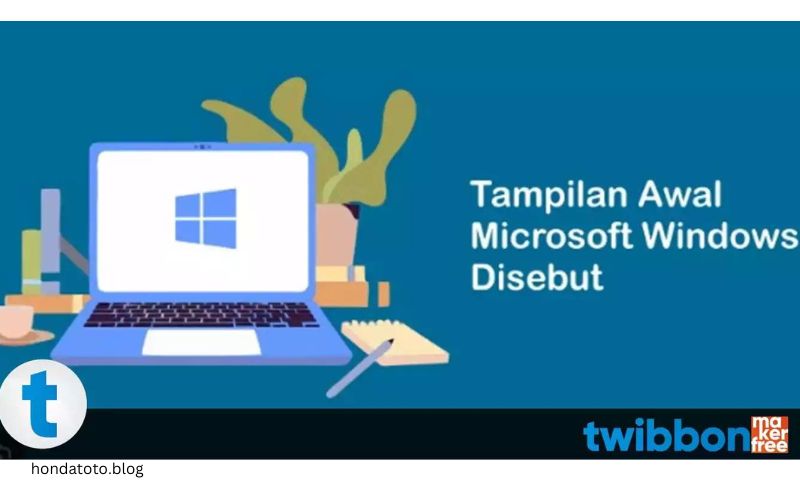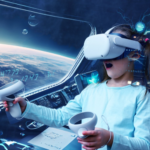Microsoft Windows has been a cornerstone of personal computing for decades, shaping how we interact with our devices on a daily basis. Among its most iconic features is the Start Screen, or Tampilan Awal, as it’s known in Bahasa Indonesia. This central hub has undergone numerous transformations since its inception, reflecting the evolution of technology and user needs. In this article, we’ll journey through the history of the Microsoft Windows Start Screen, exploring its origins, major iterations, and the impact it has had on the user experience.
The Birth of Tampilan Awal
The concept of a centralized launching point for applications can be traced back to the earliest versions of Windows. However, it wasn’t until Windows 95 that we saw the familiar Start Button make its debut. Clicking on this button revealed a menu containing shortcuts to programs, documents, and system settings, effectively serving as the precursor to the modern Start Screen.
With subsequent releases such as Windows XP and Windows 7, the Start Menu underwent refinements, introducing features like search functionality and customizable shortcuts. These improvements laid the groundwork for what would eventually become the Tampilan Awal we know today.
Windows 8 and the Birth of the Modern Start Screen
In 2012, Microsoft introduced Windows 8, a radical departure from previous versions of the operating system. One of the most notable changes was the replacement of the traditional Start Menu with a full-screen interface dubbed the Start Screen. This new design featured live tiles that provided real-time updates and information from installed apps.
The Tampilan Awal in Windows 8 was met with mixed reactions. While some users appreciated its modern look and dynamic content, others found it confusing and cumbersome, especially on traditional desktop and laptop computers. The absence of a familiar Start Button only added to the frustration for many.
Windows 8.1 and the Return of the Start Button
Responding to user feedback, Microsoft made several revisions to the Tampilan Awal in Windows 8.1. Most notably, the Start Button made a comeback, providing users with a familiar point of access to the Start Screen. Additionally, the update introduced more customization options, allowing users to resize tiles and organize them more efficiently.
Despite these improvements, Windows 8.1 failed to fully win over users who longed for the simplicity of previous Start Menus. Many businesses opted to stick with Windows 7 rather than upgrade, citing concerns over productivity and training costs associated with the new interface.
Windows 10 and the Hybrid Start Menu
With Windows 10, Microsoft sought to strike a balance between the familiarity of the traditional Start Menu and the modernity of the Start Screen. The result was a hybrid approach that combined elements of both interfaces. The Start Menu returned in a revamped form, featuring a list of applications alongside live tiles for added functionality.
One of the most significant changes in Windows 10 was the introduction of Cortana, Microsoft’s virtual assistant, which was integrated directly into the Start Menu. This allowed users to perform voice searches, set reminders, and access personalized recommendations with ease.
Furthermore, Windows 10 introduced the concept of universal apps, which could run seamlessly across different device types, including desktops, tablets, and smartphones. This unified experience extended to the Start Menu, with consistent layouts and features across all devices.
The Future of Tampilan Awal
As technology continues to evolve, so too will the Tampilan Awal of Microsoft Windows. With the rise of touchscreen devices and cloud computing, we can expect to see further refinements and enhancements to the user interface. Features like augmented reality and artificial intelligence may also play a more prominent role in shaping the future of the Start Screen.
Additionally, Microsoft’s ongoing efforts to integrate Windows with other platforms, such as Xbox and HoloLens, could lead to even more seamless experiences across devices. Whether it’s through improved customization options, enhanced productivity tools, or innovative new features, the Tampilan Awal will continue to evolve to meet the changing needs of users.
Conclusion
The Tampilan Awal of Microsoft Windows has come a long way since its humble beginnings, evolving from a simple menu to a dynamic hub of information and functionality. With each iteration, Microsoft has sought to strike a balance between innovation and familiarity, listening to user feedback and adapting to the shifting landscape of technology.
As we look ahead to the future, one thing is certain: the Tampilan Awal will remain a central element of the Windows experience, serving as the gateway to productivity, entertainment, and discovery for millions of users around the world. Whether you’re a seasoned professional or a casual user, the Start Screen will continue to be your window into the world of Microsoft Windows.







